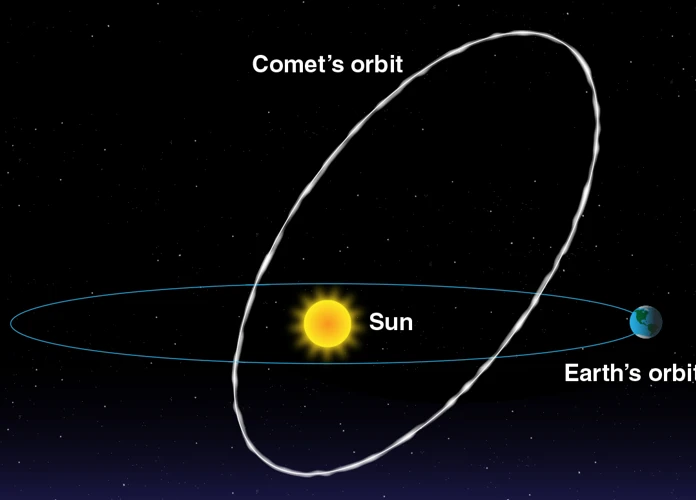Have you ever gazed up at the night sky and been captivated by the beauty of a meteor shower? These stunning celestial events are a spectacle to behold, filling the darkness with streaks of light as meteors streak across the atmosphere. But have you ever wondered how meteor showers are formed and observed? In this article, we will delve into the fascinating world of meteor showers, exploring their formation, the best ways to observe them, and some intriguing facts that will leave you even more in awe of these cosmic phenomena. So grab a cozy blanket, find a comfortable spot, and get ready to embark on a journey through the mesmerizing world of meteor showers.
Contents
- What Is a Meteor Shower?
- Formation of Meteor Showers
- Observing Meteor Showers
- Famous Meteor Showers to Watch
- Interesting Facts about Meteor Showers
- Conclusion
-
Frequently Asked Questions
- 1. How are meteor showers named?
- 2. How often do meteor showers occur?
- 3. Can meteor showers be seen from anywhere on Earth?
- 4. What causes the streak of light in a meteor shower?
- 5. How fast do meteors travel during a shower?
- 6. Are meteor showers dangerous to observers?
- 7. Can meteor showers only be seen at night?
- 8. How can I photograph a meteor shower?
- 9. What is the best time of year to see meteor showers?
- 10. Do all meteor showers have the same number of meteors?
- References
-
Frequently Asked Questions
- 1. How often do meteor showers occur?
- 2. What causes a meteor shower?
- 3. Why do meteor showers have specific names?
- 4. Can I see a meteor shower from anywhere on Earth?
- 5. How long do meteor showers last?
- 6. How many meteors can I expect to see during a meteor shower?
- 7. What is the best time to watch a meteor shower?
- 8. Do I need special equipment to observe a meteor shower?
- 9. Are there any safety considerations when observing a meteor shower?
- 10. Can I take photographs of a meteor shower?
- References
- Read More
What Is a Meteor Shower?
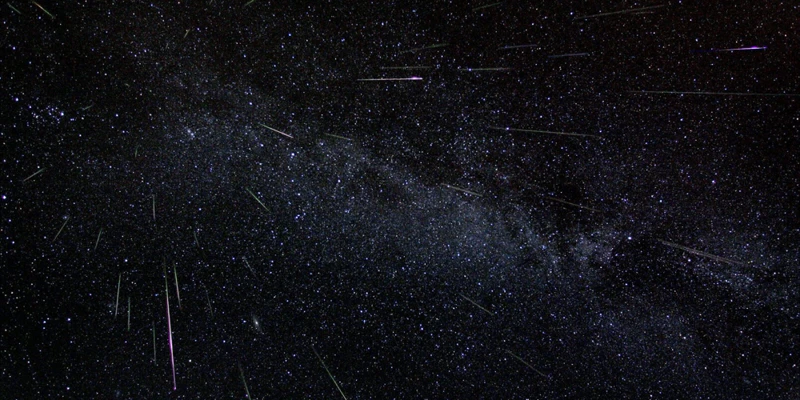
A meteor shower is a captivating astronomical event characterized by a high number of meteors, also known as shooting stars, streaking across the night sky. These meteors are actually small debris or particles, typically ranging in size from grains of sand to pebbles, that enter Earth’s atmosphere at high speeds. As they travel through the atmosphere, friction causes them to heat up and produce a luminous trail of light, creating the dazzling spectacle we observe during a meteor shower. Meteor showers are named after the constellation from which they appear to originate, called the radiant. The radiant is the point in the sky where the paths of the meteors appear to converge. Some well-known meteor showers include the Perseids, Geminids, Leonids, and Lyrids. These meteor showers occur annually when Earth passes through the orbit of a comet or asteroid, encountering the debris left behind by these celestial bodies. The interplay between the Earth, the debris, and the atmosphere creates an awe-inspiring display of celestial beauty that has fascinated skywatchers for centuries. To uncover the origins and mechanics of meteor showers, we must explore how they are formed and the conditions that make them visible to us on Earth.
Formation of Meteor Showers
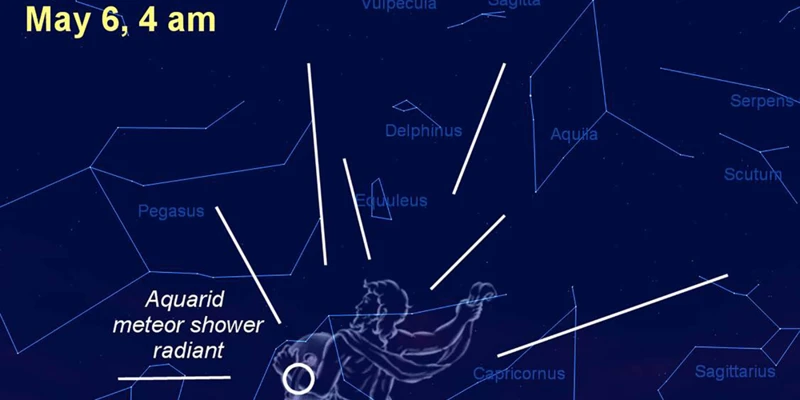
The formation of meteor showers is a fascinating process that involves the interaction between comets or asteroids and the Earth’s atmosphere. There are two main factors that contribute to the formation of meteor showers: originating from comets and Earth’s encounter with debris.
1. Originating from Comets: Many meteor showers are created when Earth passes through the dusty and debris-filled orbit left behind by a comet. Comets are icy bodies that orbit the Sun, and as they get closer to the Sun, the heat vaporizes the ice and releases dust and small particles along its path. This debris continues to orbit the Sun long after the comet has passed, creating a region of space filled with tiny particles. When the Earth’s orbit intersects with this debris trail, the particles enter our atmosphere, producing the flashes of light that we observe as meteors during a meteor shower. One famous example is the Perseid meteor shower, which originates from the debris trail left by the comet Swift-Tuttle.
2. Earth’s Encounter with Debris: In addition to cometary debris, meteor showers can also be caused by the Earth passing through the orbit of an asteroid. Asteroids are rocky objects that orbit the Sun, and just like comets, they can also leave behind trails of debris in their wake. When the Earth’s path intersects with this debris, it enters the atmosphere and creates a meteor shower. A well-known example is the Geminid meteor shower, which originates from the debris trail left by the asteroid 3200 Phaethon.
It’s important to note that not all comets or asteroids produce meteor showers. Only those that have left behind a significant amount of debris along their orbital path will generate a meteor shower when the Earth passes through it. The combination of the Earth’s orbit and the presence of debris creates the perfect conditions for these dazzling celestial displays, providing us with a remarkable show that reminds us of the vastness and wonders of the universe.
1. Originating from Comets
Comets, those magnificent celestial objects composed of ice, dust, and rock, play a significant role in the formation of meteor showers. When a comet orbits the Sun, it heats up, causing the ice to vaporize and release dust and other debris into space. As the comet continues its journey, it leaves behind a trail of this debris, forming what is known as a debris field or meteoroid stream.
When Earth’s orbit intersects with the path of a comet or its debris field, we have the potential for a meteor shower. As our planet moves through the stream of particles left behind by the comet, these particles collide with the Earth’s atmosphere. Friction and the heat generated during this atmospheric entry cause the particles to burn up and produce the stunning streaks of light we see as meteors.
The composition of the comet’s debris also influences the appearance of the meteor shower. Some comets, like Halley’s Comet, are rich in volatile materials such as carbon and nitrogen, which contribute to more vibrant and colorful meteors. Other comets, such as the Perseid meteor shower associated with Comet Swift-Tuttle, produce fast and bright meteors due to the larger size of the debris particles.
It’s important to note that not all meteor showers originate from comets. Some are associated with asteroid debris, such as the Geminid meteor shower. These space rocks, similar to comets, also leave behind trails of debris as they make their way around the Sun. Understanding the origin of meteor showers helps us appreciate the intricate dance between celestial bodies and our planet, resulting in these awe-inspiring celestial events that grace our night sky.
2. Earth’s Encounter with Debris
When it comes to meteor showers, one crucial factor is Earth’s encounter with debris. These captivating cosmic displays occur when our planet passes through the path of debris left behind by comets or asteroids. As Earth orbits the Sun, it crosses these paths at specific times throughout the year, resulting in meteor showers that are characteristic of those particular debris fields. The debris itself can range from dust particles to larger rocks, remnants of comets or asteroids that have crossed paths with Earth’s orbit. As our planet hurtles through space, gravity tugs at these stellar remnants, causing some of them to enter our atmosphere. The Earth’s encounter with this debris is like a cosmic fireworks show, with the particles igniting and burning up in our atmosphere, creating the mesmerizing streaks of light we see as shooting stars. It’s a beautiful reminder of the vastness and interconnectedness of our universe. To understand more about the specific interactions and paths that lead to meteor showers, you can explore the realm of planetary alignments and occurrence patterns, which play a role in determining when and where these celestial phenomena will occur.
Observing Meteor Showers
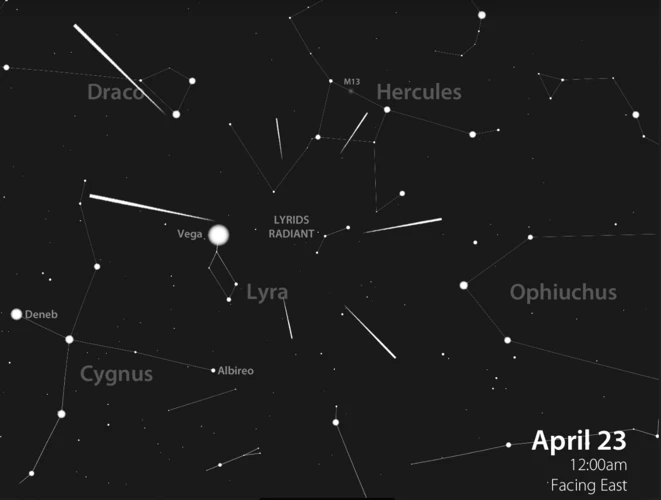
Observing meteor showers is an exhilarating experience that allows us to witness the celestial dance of shooting stars across the night sky. To make the most of this awe-inspiring event, it is important to find optimal viewing conditions. Find a location away from light pollution, as it can diminish the visibility of meteors. Choosing the right viewing spot can greatly enhance your experience, so look for open areas with a wide expanse of sky. Timing is crucial when observing meteor showers. Research the peak dates and times for the specific meteor shower you wish to observe, as this is when the rate of meteors will be at its highest. Patience is key, as it might take some time for your eyes to adjust to the darkness, allowing you to see fainter meteors. Once you are settled in your chosen spot, make yourself comfortable with blankets or chairs, and be prepared to spend a few hours scanning the sky. Remember, meteor showers can be unpredictable, so relax and enjoy the beauty of the night sky. Whether you catch a glimpse of the Perseids or the Geminids, each meteor shower offers a unique celestial spectacle that will leave you in awe of the vast wonders of the universe. So go ahead, make a wish upon a shooting star and immerse yourself in the magic of meteor showers.
1. Finding the Optimal Viewing Conditions
Finding the optimal viewing conditions is crucial for experiencing the full splendor of a meteor shower. Here are some important factors to consider:
1. Light Pollution: To get the best view of a meteor shower, it is important to be away from sources of artificial light such as cities or streetlights. Light pollution can significantly diminish the visibility of meteors, so finding a location with minimal light pollution is key. Consider visiting a nearby park or a rural area where the night sky is less affected by artificial lighting.
2. Clear Skies: Cloud cover can obstruct your view of the meteor shower, so be sure to check the weather forecast before heading out. Ideally, you want a clear and cloudless sky for optimal viewing conditions. Patience is key, as clouds can come and go throughout the night, so keep an eye on the weather updates and be ready to seize the opportunity when the sky clears.
3. Moon Phase: The brightness of the moon can also impact the visibility of meteors. A full or nearly full moon can create a lot of light pollution, making it harder to see fainter meteors. Try to plan your meteor shower viewing on nights when the moon is in its crescent phase or when it has set below the horizon. This way, the darker sky will enhance the visibility of the meteors.
4. Time of Night: Most meteor showers are best observed during the predawn hours, a few hours before dawn. During this time, your location on Earth is facing the direction of the incoming meteors, maximizing the chances of seeing more shooting stars. Set your alarm clock to wake up early and give yourself enough time to get to your chosen viewing spot before the peak hours of the meteor shower.
By considering these optimal viewing conditions, you can greatly enhance your chances of witnessing a magnificent meteor shower. Remember to dress warmly, bring a comfortable chair or blanket, and prepare to be mesmerized by the cosmic display overhead.
2. Choosing the Right Viewing Spot
Choosing the right viewing spot is essential for maximizing your experience of a meteor shower. Here are a few tips to guide you in selecting the perfect location:
1. Seek Darkness: Find a spot away from city lights to minimize light pollution and enhance visibility. Light pollution can significantly diminish your ability to see meteors, so consider heading to a rural area, a national park, or an observatory where the night sky is darker.
2. Check the Weather: Keep an eye on the weather forecast to ensure clear skies during the meteor shower. Cloudy or overcast conditions can obstruct your view, so aim for a night when the weather is expected to be favorable.
3. Have an Unobstructed View: Look for a location with an unobstructed view of the horizon. Avoid areas with tall buildings, trees, or mountains that might block your view of the sky. A clear line of sight will allow you to witness meteors as they streak across the entire expanse of the sky.
4. Consider the Moon Phase: Check the moon phase during the meteor shower. A full moon or bright moonlight can wash out the fainter meteors, making them difficult to see. Ideally, choose a night when the moon is in its crescent phase or when it has set earlier in the evening, allowing for darker skies.
Remember, finding the right viewing spot can greatly enhance your experience of a meteor shower. So be prepared, choose a location away from light pollution, and enjoy the celestial show as meteors paint the night sky with their radiant streaks.
3. Timing Is Everything
Timing is everything when it comes to observing a meteor shower. To increase your chances of catching a meteor shower at its peak, it’s important to know the dates and times when the shower is expected to occur. Meteor showers have specific peak nights, which are the nights when the rate of meteors is expected to be the highest. These peak nights can vary depending on the meteor shower and can range from a few hours to several nights. Researching the predicted peak nights of a meteor shower is crucial for planning your observation. Websites, astronomy apps, and online communities dedicated to stargazing can provide valuable information on upcoming meteor showers and their peak times. Additionally, it’s essential to consider the moon phase during the meteor shower. A darker sky with minimal moonlight will enhance visibility, allowing you to see more meteors. It’s beneficial to plan your observation during the new moon or when the moon phase is in its crescent phase. By understanding the timing of a meteor shower and taking the moon phase into account, you can optimize your chances of witnessing a spectacular display of shooting stars.
4. Tips for a Great Viewing Experience
When it comes to observing a meteor shower, following these tips can greatly enhance your viewing experience:
1. Find a Dark Location: Light pollution can hinder your ability to see the faint streaks of meteors. To optimize your view, choose a location that is far away from city lights, preferably in a rural area or a designated dark sky reserve.
2. Check the Weather: Clear skies are essential for meteor shower observation. Prior to heading out, ensure that the weather forecast is favorable and that there will be minimal cloud cover. Cloudy skies can obstruct your view and diminish the visibility of meteors.
3. Give Your Eyes Time to Adjust: Allow your eyes to adapt to the darkness. It can take up to 30 minutes for your eyes to fully adjust to low-light conditions. Avoid looking at any bright lights or screens during this time as it can disrupt the adaptation process.
4. Bring Necessary Equipment: While a telescope or binoculars are not required for observing meteor showers, it can enhance your experience by allowing you to see more details. Make sure to bring a comfortable chair or a blanket to sit or lie down on while watching the sky.
5. Patience is Key: Meteor showers can have periods of heightened activity followed by lulls. Be prepared to spend a significant amount of time patiently scanning the sky for meteors. The wait is often worth it when you witness a brilliant fireball streak across the heavens.
By following these tips, you can maximize your chances of witnessing a mesmerizing meteor shower. So grab your warm clothes, find a dark spot, and immerse yourself in the wonders of the night sky.
Famous Meteor Showers to Watch
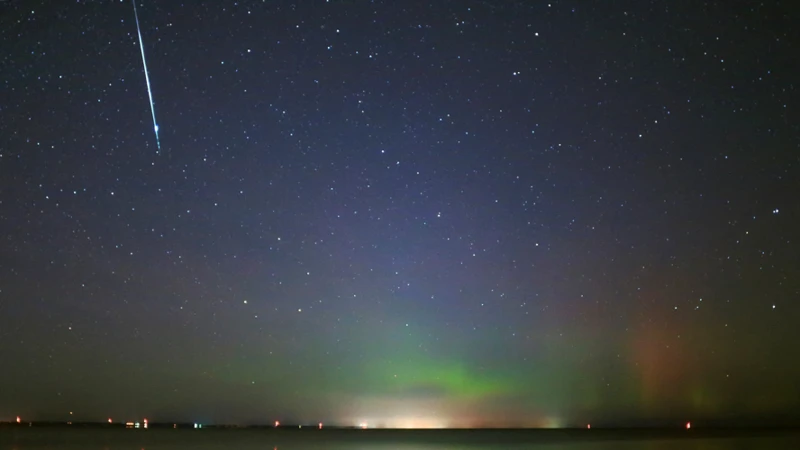
Famous meteor showers offer breathtaking displays of celestial beauty and are eagerly anticipated by skywatchers around the world. One such meteor shower is the Perseids, which occurs every year in August and is considered one of the most impressive displays in the night sky. Originating from the constellation Perseus, the Perseids showcase a high number of bright, fast meteors that leave mesmerizing trails in their wake. Another notable meteor shower is the Geminids, which peaks in mid-December. Named after the constellation Gemini, this shower is known for its slow and colorful meteors that are often visible even in light-polluted areas. The Leonids, associated with the constellation Leo, provide a dazzling show in November. The Leonids are famous for producing periodic meteor storms, where the number of meteors per hour can reach extraordinary levels. Finally, we have the Lyrids, which occur in April and are named after the constellation Lyra. Although not as prolific as the Perseids or Geminids, the Lyrids still offer a splendid display of fast and bright meteors. These are just a few of the renowned meteor showers that sky enthusiasts eagerly await each year. Whether you choose to marvel at the Perseids’ radiant display or witness the slow and colorful Geminid meteors, these celestial events are truly a sight to behold and a reminder of the mesmerizing wonders of our universe.
1. Perseids
The Perseids meteor shower is one of the most anticipated and popular celestial events of the year. It takes place annually from late July to mid-August, with its peak activity occurring around August 12th. Named after the constellation Perseus, from which the meteors appear to originate, the Perseids are created by the dust and debris left behind by the comet Swift-Tuttle. As Earth passes through this debris trail, the particles enter our atmosphere at high speeds, vaporizing and creating bright streaks of light across the night sky. The Perseids are renowned for their fast and bright meteors, often leaving long-lasting trails that continue to glow even after the meteor has disappeared. With an average rate of around 60 meteors per hour during its peak, the Perseids provide a captivating show for skywatchers around the world. It is recommended to find a dark observing location away from city lights and to lie flat on your back while observing the Perseids, allowing your eyes to take in as much of the sky as possible. So mark your calendars and prepare to witness the mesmerizing display of the Perseids meteor shower, a celestial spectacle that never fails to leave spectators in awe of the wonders of the universe.
2. Geminids
The Geminids meteor shower is one of the most highly anticipated and active meteor showers of the year. It typically occurs in mid-December and is known for its abundant display of meteors, sometimes producing up to 120 meteors per hour at its peak. What makes the Geminids unique is that they are not associated with a comet, but instead originate from an asteroid called 3200 Phaethon. This unusual origin makes the Geminids stand out from other meteor showers. The radiant of the Geminids is located in the constellation Gemini, from which it gets its name. To catch a glimpse of the Geminids, it is best to find a dark location away from light pollution. The peak activity usually occurs around December 13th and 14th, and the meteors can be seen throughout the night. The Geminids are known for their bright, slow-moving meteors, making them a favorite among skywatchers. So mark your calendars and prepare for a spectacular show as the Geminids light up the night sky, reminding us of the wonders that the universe has to offer. Whether you’re a seasoned stargazer or a novice explorer of the cosmos, the Geminids meteor shower is an event you won’t want to miss.
3. Leonids
The Leonids meteor shower is one of the most anticipated meteor showers of the year. It occurs annually in mid-November when the Earth crosses the orbit of the comet Tempel-Tuttle. The Leonids get their name from the constellation Leo, as they appear to radiate from this point in the sky. What makes the Leonids particularly fascinating is their history of producing meteor storms, where the number of meteors per hour dramatically increases. This phenomenon is attributed to the debris left by previous returns of the comet Tempel-Tuttle. The most famous meteor storm in recent history was witnessed in 1833, with an estimated 100,000 meteors seen per hour, creating a mesmerizing display in the night sky. While the Leonids meteor shower typically produces around 10-15 meteors per hour, it has been known to exhibit periodic outbursts. In fact, the Leonids are expected to have another significant outburst in the years 2032-2033. So mark your calendars and prepare for an astronomical show that will leave you in awe. Whether you’re an avid stargazer or simply curious about the wonders of the universe, the Leonids meteor shower is definitely a celestial event worth looking out for.
4. Lyrids
The Lyrids is one of the most anticipated meteor showers of the year, captivating stargazers with its radiant display. It occurs annually between April 16th and April 25th, with its peak typically falling around April 22nd. The Lyrids are associated with the comet C/1861 G1 Thatcher, which orbits the Sun once every 415 years. As Earth passes through the debris left by the comet, these particles enter our atmosphere, creating the beautiful streaks of light we know as meteors. The name “Lyrids” comes from the fact that these meteors seem to radiate from the constellation Lyra, specifically from its brightest star, Vega. Vega is a prominent star in the summer sky and serves as a guide for locating the meteor shower. The Lyrids can produce an average of 10 to 20 meteors per hour during its peak. However, unlike some other meteor showers, the Lyrids are known for occasionally producing spectacular outbursts with rates of up to 100 meteors per hour. These outbursts are unpredictable and have been observed in various years, adding an element of excitement and surprise to the viewing experience. To observe the Lyrids, find a dark location away from city lights and let your eyes adapt to the darkness. Look towards the east after midnight and keep an eye on the sky. Patience is key during meteor showers, as they can be sporadic. So, grab a comfortable blanket, make a wish upon a shooting star, and immerse yourself in the mesmerizing Lyrid meteor shower.
Source: [Significance of Ophiuchus in Constellations and Star Maps](/significance-ophiuchus-constellations-star-maps/)
Interesting Facts about Meteor Showers
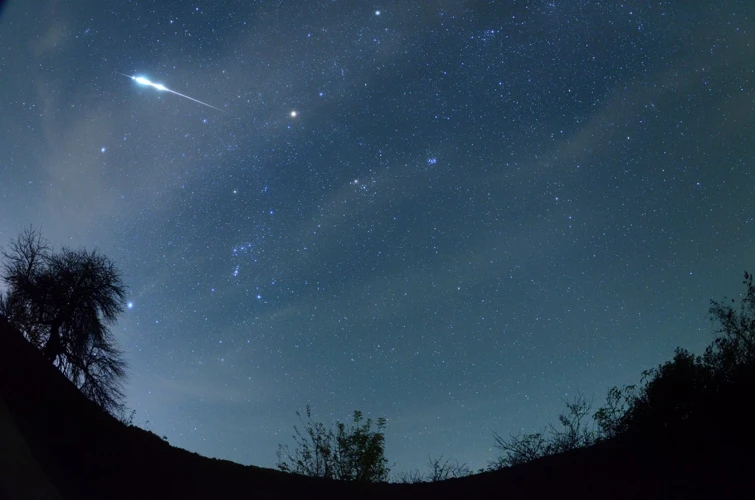
Meteor showers have fascinated and mesmerized people for centuries. As we delve into some interesting facts about these celestial events, prepare to be amazed by the wonders of the night sky. Did you know that meteor showers actually have their own parent celestial bodies? These are often comets or asteroids that leave behind a trail of debris as they orbit the Sun. When Earth passes through this trail, we experience a meteor shower. Another intriguing fact is that the particles responsible for meteor showers are often no bigger than grains of sand, yet they produce dazzling streaks of light as they burn up in the atmosphere. The Perseids, one of the most popular meteor showers, takes its name from the constellation Perseus. Likewise, the Geminids are associated with the constellation Gemini. Meteor showers can also produce different colors besides the usual white or yellow. Some meteors may appear green or blue due to the composition of the particles and the interaction with the atmosphere. Interestingly, scientists continue to observe and study meteor showers to gain insights into the composition of comets and asteroids, as well as the dynamics of our own atmosphere. So the next time you witness a meteor shower, remember that you’re not just witnessing a remarkable celestial display, but also gaining a peek into the mysteries of the universe.
Conclusion

In conclusion, meteor showers are a breathtaking display of nature’s celestial wonders. These mesmerizing events, formed through the interaction between Earth and debris left behind by comets or asteroids, captivate us with their radiant streaks of light illuminating the night sky. By understanding the origins and formation of meteor showers, we gain a deeper appreciation for the intricate mechanisms at play in our universe. Whether you’re stargazing in search of the Perseids or braving the cold to witness the Geminids, each meteor shower offers a unique opportunity to connect with the vastness of space and the beauty of the cosmos. So, next time you find yourself under a dark night sky during a meteor shower, take a moment to marvel at the celestial spectacle above and contemplate the wonders of the universe. And who knows, you might even catch a shooting star and make a wish upon its fleeting brilliance. Keep exploring the mysteries of the cosmos and perhaps you’ll uncover even more enchanting celestial phenomena, like the intriguing connection between Ophiuchus and medicine as the healing serpent bearer.
Frequently Asked Questions

1. How are meteor showers named?
Meteor showers are named after the constellation from which they appear to radiate, known as the radiant. For example, the Perseids meteor shower appears to radiate from the constellation Perseus.
2. How often do meteor showers occur?
Meteor showers occur annually or at regular intervals throughout the year. Some meteor showers, like the Perseids, occur around the same time each year, while others may have irregular schedules.
3. Can meteor showers be seen from anywhere on Earth?
Yes, meteor showers can be observed from anywhere on Earth, provided that the weather conditions are favorable and the radiant is above the horizon from the viewing location.
4. What causes the streak of light in a meteor shower?
The streak of light in a meteor shower is caused by the friction between the meteoroid and the Earth’s atmosphere. As the meteoroid enters the atmosphere, it heats up and vaporizes, producing a luminous trail of glowing gas.
5. How fast do meteors travel during a shower?
Meteors can travel at speeds of up to 160,000 miles per hour (257,500 kilometers per hour) when they enter the Earth’s atmosphere. However, their speed decreases as they encounter atmospheric resistance.
6. Are meteor showers dangerous to observers?
No, meteor showers are not dangerous to observers on Earth. The meteors burn up in the atmosphere and disintegrate before they reach the ground. They pose no threat to human safety.
7. Can meteor showers only be seen at night?
Meteor showers are best observed during the nighttime when the sky is dark. However, some brighter meteors called fireballs can be seen during the day, but they are less common.
8. How can I photograph a meteor shower?
To photograph a meteor shower, set your camera on a tripod and use a wide-angle lens. Set a long exposure time and high ISO to capture the faint meteors. Experiment with different settings for the best results.
9. What is the best time of year to see meteor showers?
The best time of year to see meteor showers depends on the specific shower. However, the Perseids in August and the Geminids in December are generally considered some of the most reliable and impressive meteor showers.
10. Do all meteor showers have the same number of meteors?
No, meteor showers can vary in intensity. Some showers may produce hundreds of meteors per hour, while others may only have a few visible meteors. The number of meteors seen during a shower depends on various factors such as the size of the debris field and Earth’s position in its orbit.
References
Frequently Asked Questions

1. How often do meteor showers occur?
Meteor showers occur regularly throughout the year, with some showers happening annually and others happening at specific intervals.
2. What causes a meteor shower?
A meteor shower is caused by the Earth passing through the debris trail left by a comet or asteroid as they orbit the sun.
3. Why do meteor showers have specific names?
Meteor showers are named after the constellation from which they appear to originate. For example, the Perseids appear to come from the constellation Perseus.
4. Can I see a meteor shower from anywhere on Earth?
Yes, meteor showers can be visible from anywhere on Earth, depending on the viewing conditions and the shower’s radiant point.
5. How long do meteor showers last?
A meteor shower typically lasts for several days, with the peak viewing time lasting for a few hours. However, some showers may have a shorter duration.
6. How many meteors can I expect to see during a meteor shower?
The number of meteors visible during a meteor shower varies. Some showers may only produce a few meteors per hour, while others can produce hundreds or even thousands.
7. What is the best time to watch a meteor shower?
The best time to watch a meteor shower is during the pre-dawn hours when the radiant point of the shower is highest in the sky and the surrounding area is in darkness.
8. Do I need special equipment to observe a meteor shower?
No, special equipment is not necessary to observe a meteor shower. You can simply use your eyes and find a dark location away from city lights.
9. Are there any safety considerations when observing a meteor shower?
It is generally safe to observe a meteor shower, but it is important to dress warmly and protect yourself from the cold. Additionally, be mindful of your surroundings and watch for any potential hazards.
10. Can I take photographs of a meteor shower?
Yes, it is possible to capture photographs of a meteor shower. You will need a camera with manual settings, a sturdy tripod, and a wide-angle lens. Patience and some knowledge of astrophotography techniques are also helpful.

